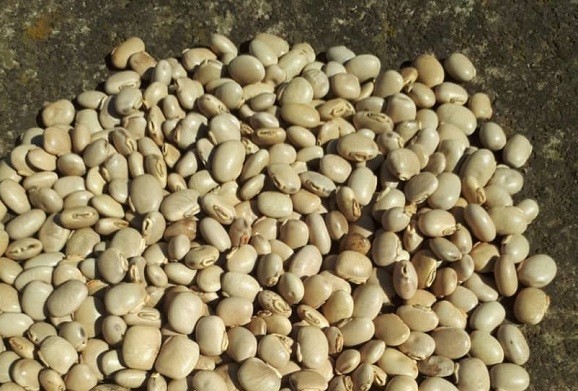Northern Rwanda Cultivates Uncommon Bean Variety, Priced at Rwf 5,000 per Kg
Ntirenganya Jean d’amour manages a 10-hectare farm in Burera district, where an unconventional crop, locally known as “Ibishyimbo bya Mucuna” or “Mucuna beans,” thrives instead of traditional edible plants.
This unique crop serves as animal fodder, offering an alternative to extensive grass cultivation for cow feed.
For Ntirenganya, cultivating this fodder proves to be a lucrative venture, especially with plummeting prices for food crops in the market.
Over 230 farmers in the rural district have shifted from traditional food crops to this alternative, enhancing their economic prospects.
Ntirenganya shared with Teradignews that he harvests one ton every six months, selling it at Rwf 5,000 per kilogram, marking a profitable period for him.
Comparatively, the normal edible beans fetch prices between Rwf 800 and Rwf 1000, varying by region in Rwanda, and are not as financially rewarding.
Renowned farmers like Ntirenganya and Nyirahabimana Zerida are gaining recognition for cultivating large quantities of this fodder, which not only serves as income but also as feed for their cows, contributing to household incomes in Burera district.
Now, let’s delve into the science behind these unique “velvet beans.”
Scientifically termed “Mucuna pruriens,” these climbing legumes share similarities with common beans, a staple in Rwanda.
Following flower pollination, the stems develop small branches producing clusters of 10 to 14 pods.
These stout, curved pods, ranging from 10 to 12.5 cm, contain two to six seeds covered in greyish-white or orange hairs, potentially causing skin irritation.
Measuring 1.2 to 1.5 cm in length, 1 cm in breadth, and 0.5 cm in thickness, these beans exhibit various colors globally, such as brown and black, although those in Rwanda present a distinct dark white hue.
It is these seeds and pods that serve as a nutritional source for cows.
According to insights from the Rwanda Agricultural Board (RAB), Mucuna pruriens offers a double advantage to farmers.
Its unique genetic makeup enables it to coexist with other food crops, eliminating the need for separate cultivation areas.
Mucuna enhances soil fertility and safeguards against erosion, as detailed by Nyiransengimana Eugenie, a researcher in the RAB’s Ruminant Program, based in Musanze district.
Despite its success in Burera district, Mucuna cultivation has not expanded to other regions in Rwanda.
Introduced by a non-governmental organization aiming to uplift family incomes and reduce gender-based violence, it remains a localized phenomenon.
Globally, Mucuna cultivation is not widespread, originating from southern China and eastern India.
Thriving exclusively in a wet temperate climate, primarily found in northern Rwanda, this geographical requirement may explain its limited spread to other regions.
Conclusive research is yet to determine whether Mucuna beans are fit for human consumption. While some communities in China and India incorporate them into their diets, it has not gained broader acceptance as a meal in other parts of the world.

